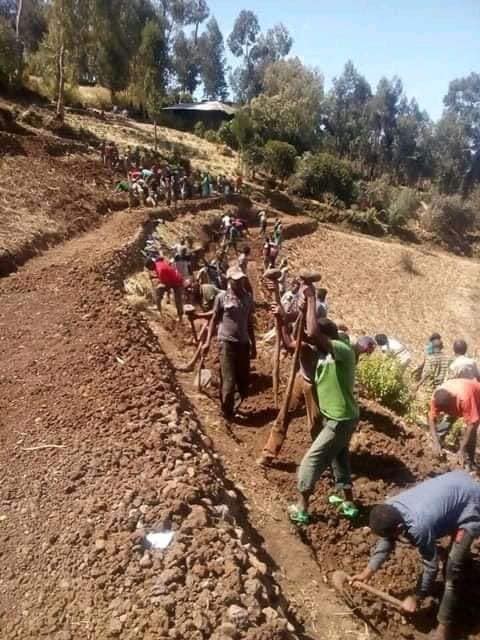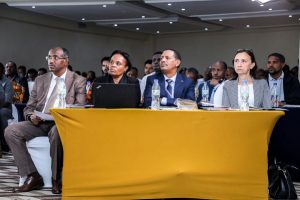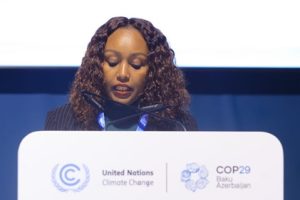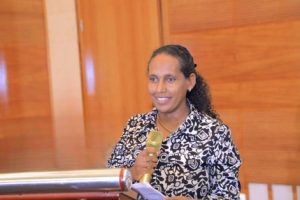
BY MUSSA MUHAMMED
Of the predominant factors reinvigorating environmental protection and promoting crop production via taking a range of measures, terracing and sediment preservation comes at the for front. In so doing we can well protect dams and prolong their durability apart from improving crop production.
Taking this important step to augment environmental protection and dams safeguard way, the Benishangul-Gumuz National State is arduously working to come up with meaningful deed along that line.
The Chief of Benishangul-Gumuz National State, Ashadli Hassan, has called on the public to strengthen their participation in the ongoing watershed development work to save the Grand Ethiopian Renaissance Dam (GERD) from sediment and silt exposure.
Top leaders of the region have been monitoring the watershed development campaign during summer in our country that may cause floods with heavy residue.
According to Ashadli Hassan, state’s natural resources are declining and their economic contribution is also at minimal level. Hence, he said, we should participate in the ongoing watershed development work before the rainy season.
He further said that as the state is the center of the construction of the Renaissance Dam, it will be much more benefited than other states in the country. So, the community of the Benishangule-Gumuz State should play the lion’s share to keep it from the residue and others that harm the GERD.
He noted that the summer basin development works have yielded results over the past years, and it is planned to cover 32,000 hectares of man-made land with the participation of 200,000 people this summer terrace works.
He also noted that seedlings are being prepared for next summer by the government and other state community to keep the overflow of the soil residue.
He also confirmed the community has been preparing seedlings by initiating themselves for next tree plantation campaign to play their part to contribute to the green legacy initiative. Hence, the regional government would provide them with motivations as it did previously.
Mariam Mussa, one of the farmers and the resident of Bambasi woreda involved in the watershed development wok campaign, said that the deforestation taken place following manmade and natural happenings in the region have caused the loss of fertile soil over the region.
“Due to this, land has got seriously damaged, by fostering development work the land has been rehabilitated,” she said.
“We are doing the basin work on our own initiative,” said farmer Khalifa Ismail and the other residents in the region could have done this by their own initiatives like us to put cornerstones for many national activities including the GERD to help bolster country’s economy after completion.
Khalifa added that basin development has so far been on pilot projects, but this time around the community has started the experience in their own field.
Ali Merqeni, head of the Bambasi Woreda Agriculture Office in Assosa Zone, said about 10 million seedlings have been prepared for planting in the summer basin of the woreda government prepared by agriculture bureau. It could not include privately preparing seedlings.
Besides, communities and private seedling preparation actors in different worda’s of the state have got supports in different ways from the state government.
All of the interviewee agreed that the problem created against our dams will be easily addressed, soil erosion can be tackled and the challenges of the GERD will be minimized if all citizens are committed to effectively discharge responsibilities. Such a marvelous cooperation needs to be well consolidated as fighting against enemy of our country requires the amalgamated efforts of all.
In so doing, we can easily alleviate poverty and nurture prosperity so the saying goes, “Unity is Strength.”
In general, soil Sediment caught by dams has consequences for the reservoir and for the downstream channels and in some cases, seaside zones. As sediment accumulates behind dams, it can damage reservoir functions and ultimately reduce or eliminate storage capacity threatening the sustainability of water supply, and hydroelectric generation.
Good dam sites are limited, so reservoir storage capacity should be viewed under the Boardinghouse Rule as an exhaustible resource if a conscious design decision is made to allow a reservoir to fill with sediment, and consequently, reservoir storage capacity should be valued more highly than it is presently exist in dam planning.
Today, many dams are planned and built in Ethiopia including the GERD without any consideration of the impact of soil sedimentation.
The reservoir is designed to store estimated sediment loads ranging from 50–100 and above years without being dysfunctional. Yet, in many cases, dams can be designed to pass much of their sediment load.
In this case, reservoir storage capacity can be viewed as renewal resources, with much more positive implications for the future sustainability of water supply and hydroelectric generation for any country.
Based on the comprehensive experience of many countries regarding this work, experts recommended that dams shall be planned and designed for sediment management, where possible by passing sediment through or around the reservoirs.
The site selection, design, and operation of dams determine their ability to pass sediment. Siting decisions are irreversible, and to modify part of the dams after they are built with sediment passage facilities such as discharge gates is preferable to resist risks though expensive.
Therefore, the most important consideration in prevention of the impact of sediment through reservoirs is getting it right from the start. This principle implies that existing plans for dams not yet built should be urgently and fundamentally revisited to consider a full range of sediment passage options.
As learnt from the state president and the regional residents using soil sediment management, it is highly likely to save the GERD and other dams which are susceptible to a range of calamity at different time
The Ethiopian Herald January 28/2021





